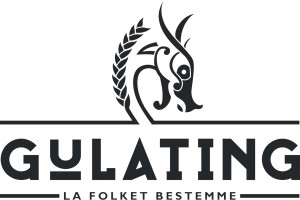Hops
|
Amount
|
Variety
|
Cost
|
Type
|
AA
|
Use
|
Time
|
IBU
|
Bill %
|
|
34.08 g |
Styrian Goldings34.08 g Styrian Goldings Hops |
|
Pellet |
5.5 |
Boil
|
60 min |
19.78 |
100% |
|
34.08 g
/ $ 0.00
|
Hops Summary
|
Amount
|
Variety
|
Cost
|
IBU
|
Bill %
|
|
34.08 g |
Styrian Goldings (Pellet) 34.08 g Styrian Goldings (Pellet) Hops |
|
19.78 |
100% |
|
34.08 g
/ $ 0.00
|
Mash Guidelines
|
Amount
|
Description
|
Type
|
Start Temp
|
Target Temp
|
Time
|
|
21.4 L |
Single Infusion |
Infusion |
-- |
67 °C |
90 min |
|
22.2 L |
Batch Sparge |
Sparge |
-- |
77 °C |
5 min |
Starting Mash Thickness:
3.14 L/kg
|
Target Water Profile
Balanced Profile
| Ca+2 |
Mg+2 |
Na+ |
Cl- |
SO4-2 |
HCO3- |
|
80 |
5 |
25 |
75 |
80 |
100 |
Rice Hulls:
Add 1lb for every 5 lbs of malt to help with heat distribution.
Pilsner Malt:
Protein rest (122-131F 15 min)
CaraMunich and Special B Malt:
Add after mash-out, during vorlauf.
Candi Sugar and Cane Sugar:
Add to boil kettle.
Step Mash
122-131 10-20 min
142-146
154-162
Add Crystal malt and Special B after mash-out, during vorlauf.
Add Candi Sugar and Cane Sugar to boil kettle.
Slowly raise temperature to 70◦F over the course of a week. Lager for 1 month at 45◦F - 50◦F.
Condition at least 4 weeks. |
|
Mash Chemistry and Brewing Water Calculator
|
Notes
Overall Impression:
A deep reddish-copper, moderately strong, malty, complex Trappist ale with rich malty flavors, dark or dried fruit esters, and light alcohol blended together in a malty presentation that still finishes dry.
Aroma:
Complex, rich-sweet malty aroma, possibly with hints of chocolate, caramel and/or toast (but never roasted or burnt aromas). Moderate fruity esters (usually including raisins and plums, sometimes also dried cherries). Esters sometimes include banana or apple. Spicy phenols and higher alcohols are common (may include light clove and spice, peppery, rose-like and/or perfumy notes). Spicy qualities can be moderate to very low. Alcohol, if present, is soft and never hot or solventy. Low to no spicy, herbal, or floral hop aroma, typically absent. The malt is most prominent in the balance with esters and a touch of alcohol in support, blending together for a harmonious presentation.
Appearance: Dark amber to copper in color, with an attractive reddish depth of color. Generally clear. Large, dense, and long-lasting creamy off-white head.
Flavor:
Similar qualities as aroma. Rich, complex medium to medium-full rich-sweet malt flavor on the palate yet finishes moderately dry. Complex malt, ester, alcohol and phenol interplay (raisin-like flavors are common; dried fruit flavors are welcome; clove or pepper spiciness is optional). Balance is always toward the malt. Medium-low bitterness that doesn’t persist into the aftertaste. Low spicy, floral, or herbal hop flavor is optional and not usually present.
Mouthfeel: Medium-full body. Medium-high carbonation, which can influence the perception of body. Low alcohol warmth. Smooth, never hot or solventy.
Comments:
Most commercial examples are in the 6.5 – 7% ABV range. Traditionally bottle-conditioned (or refermented in the bottle).
History: Originated at monasteries in the Middle Ages, and was revived in the mid-1800s after the Napoleonic era.
Characteristic Ingredients:
Belgian yeast strains prone to production of higher alcohols, esters, and phenolics are commonly used. Impression of complex grain bill, although traditional versions are typically Belgian Pils malt with caramelized sugar syrup or other unrefined sugars providing much of the character. Saazer-type, English-type or Styrian Goldings hops commonly used. No spices are traditionally used, although restrained use is allowable (background strength only).
Style Comparison:
Should not be as malty as a bock and should not have crystal malt-type sweetness. Similar in strength and balance as a Belgian Blond, but with a richer malt and ester profile. Less strong and intense as a Belgian Dark Strong Ale.
Vital Statistics:
OG: 1.062 – 1.075
FG: 1.008 – 1.018
IBUs: 15 – 25
SRM: 10 – 17
ABV: 6.0 – 7.6%
Commercial Examples:
Affligem Dubbel, Chimay Première, Corsendonk Pater, Grimbergen Double, La Trappe Dubbel, St. Bernardus Pater 6, Trappistes Rochefort 6, Westmalle Dubbel
Tags:
high-strength, amber-color, top-fermented, western-Europe, traditional-style, malty

Last Updated and Sharing

- Public: Yup, Shared
- Last Updated: 2021-03-01 15:04 UTC
For quick copying and pasting to a text based forum or email.
Click the Download as HTML file button below.
Recipe costs can be adjusted by changing the batch size. They won't be saved but will give you an idea of costs if your final yield was different.
|
Cost $ |
Cost % |
| Fermentables |
$ |
|
Steeping Grains
(Extract Only) |
$ |
|
| Hops |
$ |
|
| Yeast |
$ |
|
| Other |
$ |
|
| Cost Per Barrel |
$ 0.00 |
|
| Cost Per Pint |
$ 0.00 |
|
| Total Cost |
$ 0.00 |
|
Discussion about this recipe:
